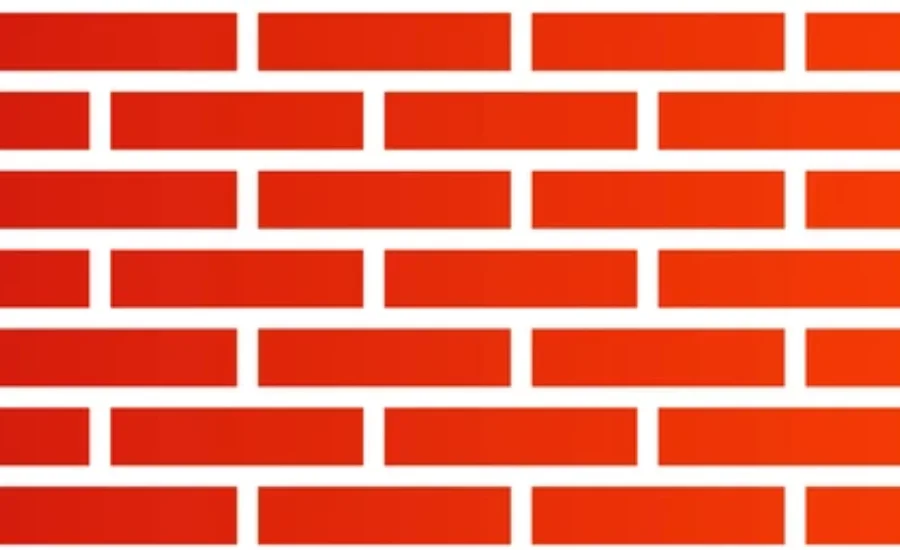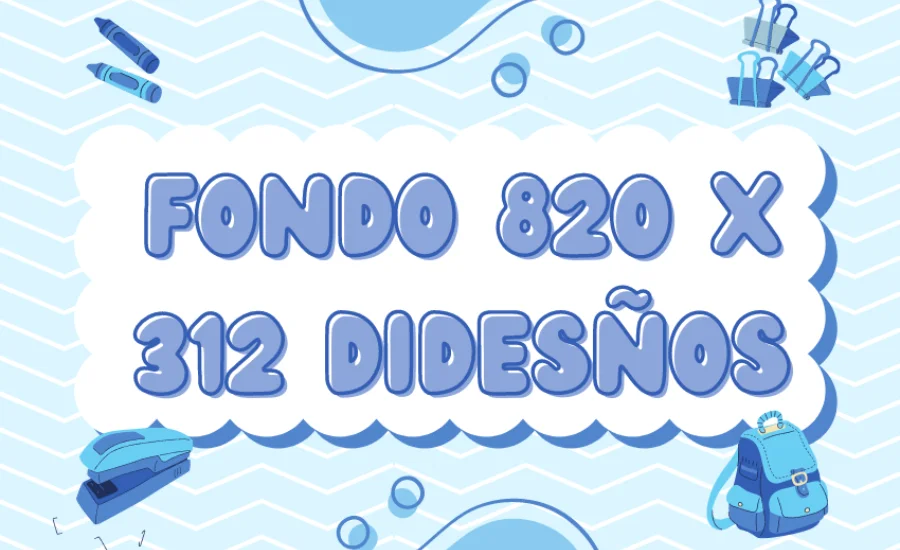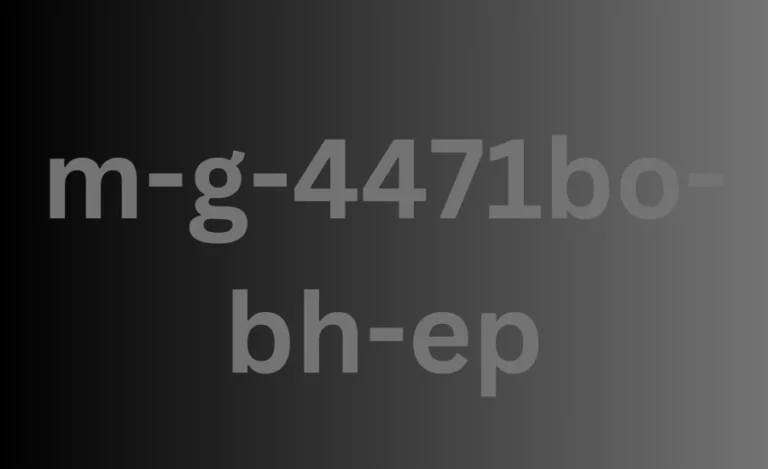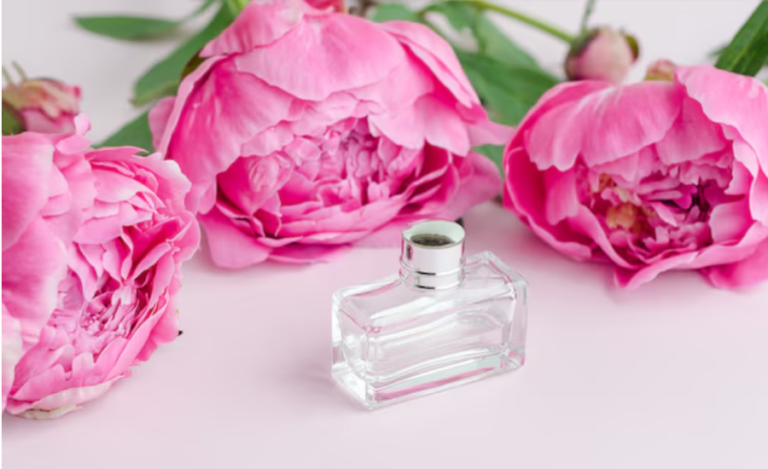Fondo 820 x 312: 7 Essential Tips for Stunning Banner Design
The Fondo 820 x 312 dimension is widely recognized in the digital design world, particularly for creating banners and cover images on platforms like Facebook. This size is essential for maintaining a sharp, professional look across different devices, ensuring your visuals appear clean and well-structured. Understanding and utilizing these dimensions correctly is key to delivering high-quality and engaging digital content that resonates with your audience.
The Importance of Fondo 820 x 312 Dimensions in Digital Design
The Fondo 820 x 312 pixel size has become a standard for various digital design applications due to its versatility and ability to maintain high-quality visuals across different platforms. Whether for social media, websites, or email marketing, using the right dimensions is crucial for achieving professional, clear, and impactful designs that leave a lasting impression on your audience. Understanding how to effectively apply this size can significantly improve the overall visual appeal and functionality of your digital content.
Social Media Banners and Cover Photos: One of the most common uses for the Fondo 820 x 312 dimension is for social media banners, especially Facebook cover photos. Since cover photos are one of the first elements users see on your profile, having a design that fits these dimensions ensures that your banner is displayed in high quality without any stretching, cropping, or pixelation issues. A properly sized cover photo will look visually appealing on both desktop and mobile devices, enhancing your brand’s presentation. This dimension allows enough space to include both eye-catching visuals and important information, like logos, taglines, or calls to action, making your social media profile more engaging and professional.
Website Header Design: Another important application of the Fondo 820 x 312 size is in website headers. The header is a prominent feature of any website, often setting the tone for the entire user experience. Ensuring that the header is designed in the correct dimensions prevents distortion and ensures that it integrates seamlessly with the rest of the site’s layout. A clean and well-optimized header not only enhances the aesthetic of the website but also improves navigation, making it easier for users to focus on the content and engage with your site. Choosing the correct dimensions, such as 820 x 312, ensures that the header maintains its quality across different screen sizes and resolutions, providing a consistent experience for users, whether they’re browsing on a desktop, tablet, or smartphone.
Enhancing Email Marketing with Effective Headers: In email marketing, first impressions are everything. The header, often the first visual element recipients see when opening an email, can significantly impact whether they continue to engage with your content. Using the 820 x 312Fondo 820 x 312 size for email headers ensures that your design is eye-catching, clear, and properly displayed in most email clients. A well-designed header in this dimension can effectively convey your branding, reinforce your message, and draw attention to the content that follows. Whether you’re promoting a sale, sharing company news, or sending out a newsletter, an optimized header helps establish a professional tone and encourages higher engagement rates. Additionally, by adhering to the correct dimensions, you reduce the risk of display issues, such as distorted or cut-off images, which can negatively affect your campaign’s effectiveness.
Why Correct Dimensions Matter in Digital Design: Using the right dimensions in digital design is not just about aesthetics; it’s about creating a seamless experience for your audience across different devices and platforms. A design that looks great on a desktop may not translate well to mobile without the correct size specifications. The Fondo 820 x 312 dimension is particularly useful because it strikes a balance between providing ample space for your content while ensuring compatibility with most viewing formats. Whether it’s a social media banner, website header, or email marketing visual, paying attention to the dimensions ensures your design is not only visually appealing but also functional and user-friendly. This attention to detail reinforces the professionalism of your brand and helps establish trust with your audience.
By using the Fondo 820 x 312 design size strategically across your digital platforms, you can create consistent, high-quality visuals that enhance your brand’s presence and improve overall user experience.
Key Principles of Effective Design

To create visually appealing and well-structured designs, certain principles must be followed to ensure the elements work together harmoniously. Achieving this balance between creativity and clarity helps produce designs that not only catch the eye but also communicate effectively.
Achieving Balance in Design: Balance in design refers to the even distribution of visual elements across the layout, ensuring that no single part overwhelms the rest. This can be achieved in two ways: symmetrical balance, where elements are mirrored across the design, providing a sense of stability, or asymmetrical balance, which creates a more dynamic look by positioning different-sized elements in a way that still feels harmonious. Striking the right balance helps create an organized and visually pleasant composition that is easy for the audience to engage with.
The Power of Contrast: Contrast plays a crucial role in making designs more vibrant and engaging. By placing opposing elements—such as light and dark colors, large and small shapes, or varying textures—next to each other, you create a striking visual effect. Contrast is not only a way to add depth and interest to your design but also a tool to guide the viewer’s attention to key areas, ensuring important information stands out clearly.
Ensuring Consistent Alignment: Alignment is essential for maintaining a cohesive and professional appearance. It ensures that every element in the design is visually connected, creating a sense of order and structure. Proper alignment helps guide the viewer’s eyes smoothly through the design, making the content easier to follow and enhancing readability. Whether aligning text, images, or graphics, ensuring that everything is properly positioned contributes significantly to the overall clarity and professionalism of the design.
Repetition for Unity and Consistency: Repetition is a key principle for creating unity throughout your design. By using recurring elements, such as consistent colors, fonts, or patterns, you reinforce the visual identity and create a cohesive look that ties everything together. Repetition helps build recognition and makes the design feel connected, ensuring that different parts of the design don’t feel disjointed or out of place. This principle is particularly important in branding, as it helps establish a recognizable and consistent visual language.
Applying these principles—balance, contrast, alignment, and repetition—results in designs that are not only visually pleasing but also effective in communicating your message clearly and cohesively.
Creating a High-Quality Fondo 820 x 312 Design
When designing for the Fondo 820 x 312 dimension, commonly used for social media banners or website headers, it’s important to follow a structured process to ensure your design is effective and professional. From setting up the canvas to finalizing your design, each step contributes to a polished and visually appealing result that aligns with your brand’s message.
Setting Up Your Canvas: The first step in creating a well-crafted design is to set your canvas to the correct dimensions: Fondo 820 x 312 pixels. Starting with the correct size is crucial to avoid resizing issues later that can affect the quality and clarity of the design. This ensures your design will fit perfectly in the intended space, such as a Facebook cover photo, without becoming stretched, cropped, or pixelated.
Selecting the Right Theme: Choosing an appropriate theme is key to aligning your design with your brand’s identity or the message you want to convey. The theme should reflect the tone you’re aiming for, whether it’s formal and professional, fun and casual, or seasonal. This will guide your color choices, typography, and imagery, helping to create a cohesive and engaging design. A strong theme allows the audience to connect with the content emotionally and reinforces your brand’s presence.
Incorporating Text and Visuals: Adding text and images to your design requires careful consideration to ensure balance and clarity. Text should be readable and positioned in a way that does not overpower the visuals. Use fonts that align with your theme while ensuring legibility across various devices. Images should be high quality, properly aligned, and relevant to the content, supporting the overall message without causing distractions. The interaction between text and visuals should be harmonious, enhancing the design rather than competing for attention.
Perfecting Your Design Before Finalizing: Once you’ve laid out your elements, take the time to review and polish the design. Look for any inconsistencies, such as misaligned text, pixelation, or color imbalances, and make necessary adjustments. It’s essential to ensure that your design is both aesthetically pleasing and functional. This review process helps catch any potential issues that could affect the final presentation. After final adjustments, export your design in the correct format to ensure it maintains its quality and integrity across all platforms.
By following these steps—starting with the right dimensions, selecting a strong theme, balancing text and images, and thoroughly reviewing the final product—you’ll create a professional, visually appealing design that communicates effectively and upholds your brand’s standards.
Designing Clean and Professional Banners

Creating an effective banner design requires a thoughtful approach that balances simplicity, quality, and functionality. Following these key principles helps ensure your design is visually appealing, easy to read, and optimized for various devices.
Embrace Simplicity for Stronger Impact
A simple design is often more effective because it allows the core message to stand out without overwhelming the viewer. Avoid cluttering your banner with excessive elements, as this can distract from the primary focus. A clean and minimal approach helps your message shine through and keeps the viewer’s attention on what’s important.
Use High-Resolution Images for Professional Results
Always prioritize using high-quality, high-resolution images in your design. Low-quality visuals can detract from the overall impact and make your design appear unprofessional. Clear, crisp images ensure that your banner looks polished and maintains its integrity across different platforms and devices.
Prioritize Readability with Clear Text
Ensuring that the text is easy to read is crucial for effective communication. Choose font sizes and styles that are legible, and make sure there is sufficient contrast between the text and the background to enhance clarity. The right combination of typography and contrast will make your message more accessible and impactful, regardless of where it is viewed.
Optimize for Multiple Devices
In today’s digital world, your banner design needs to look great on a variety of devices, including desktops, tablets, and smartphones. Testing your design on different screen sizes ensures that it maintains its quality and remains visually consistent across platforms. By optimizing for multiple devices, you ensure that your audience has a seamless viewing experience, no matter how they access your content.
By following these essential guidelines, you’ll create a clean, professional banner design that resonates with viewers, effectively communicates your message, and works across multiple devices.
Common Design Mistakes to Avoid for a Professional Look

Crafting a professional and visually appealing design requires careful attention to detail. Avoiding common mistakes can help ensure your design is clean, cohesive, and effective in delivering your message.
Avoid Overcrowding Your Design: One of the most frequent design mistakes is overcrowding. Filling your layout with too many elements can overwhelm the viewer and distract from the key message you’re trying to convey. By keeping your design uncluttered, you allow the most important information to stand out, making it easier for the audience to focus and engage with your content.
Choose Your Colors Wisely: Poor color choices can significantly affect how your design is perceived. Clashing or overly bright colors can make your design visually uncomfortable and detract from its overall appeal. Stick to a cohesive color palette that aligns with your brand’s identity and ensures visual harmony. Using complementary colors will help create a balanced and aesthetically pleasing design that enhances your message rather than distracting from it.
Follow Your Branding Guidelines: Consistency is key when it comes to branding. Ignoring your brand’s established guidelines can lead to a disjointed look that may confuse your audience and dilute your brand’s identity. Always ensure your design aligns with your brand’s color schemes, fonts, and overall style to maintain a unified appearance. Adhering to these guidelines strengthens brand recognition and builds trust with your audience.
Maintain a Consistent Style Throughout: Inconsistent styling is another common design pitfall. Mixing different styles—whether in typography, imagery, or graphic elements—can create a chaotic and unprofessional look. To avoid this, ensure that all elements in your design follow a consistent style that aligns with your overall theme. This consistency contributes to a polished and cohesive appearance, making your design look more professional and easier to engage with.
By avoiding these design mistakes, you can create visuals that are not only aesthetically pleasing but also aligned with your brand and effectively communicate your message.
Trending Design Styles for Engaging Visuals
In the ever-evolving world of design, staying updated with the latest trends helps create compelling and visually appealing banners. Whether you’re designing for a website, social media, or digital advertising, incorporating these popular styles can significantly enhance your visual content.
Embrace Minimalist Design: Minimalism continues to be a strong design trend due to its focus on simplicity and functionality. By reducing clutter and using only essential elements, minimalist designs achieve a clean, refined look that allows your message to take center stage. This approach not only creates an elegant aesthetic but also enhances user experience by making the design easy to navigate and visually digestible.
Utilize Bold Typography for Impact: Bold typography is a powerful tool that makes your design stand out and emphasizes key messages. By using large, striking fonts, you can grab the viewer’s attention immediately, ensuring that important information is clearly communicated. This trend is particularly effective for highlighting calls to action or promoting special offers, giving your design a memorable and modern edge.
Incorporate Animated Banners for Engagement: Adding animation to your banners introduces movement and dynamism, making your design more engaging and eye-catching. Animated banners are especially popular in digital marketing and social media, where grabbing attention is crucial. Well-executed animations can add personality and flair to your design, encouraging higher interaction rates and making your content more memorable.
Enhance Visual Appeal with Gradients: Gradients are an excellent way to add depth and dimension to your design. Whether applied subtly or used in a bold, vibrant manner, gradients can elevate the overall visual appeal of your banner. This design element adds a modern touch, transforming flat, static visuals into more dynamic and interesting compositions. Gradients also work well in creating backgrounds that seamlessly blend colors, adding visual intrigue without overpowering the main content.
Enhancing Banner Design with Personalization and Relevance
To create banners that effectively capture attention and resonate with your audience, consider integrating personalization, seasonal themes, and event-specific elements into your design strategy. These approaches not only boost engagement but also ensure your content remains relevant and impactful.
Personalize Your Design for Greater Impact: Personalization is a key strategy for making your banner more engaging and relevant to your audience. By incorporating personalized elements—such as using individual names, tailored messages, or custom graphics—you can create a more meaningful connection with viewers. Personalization helps to address the audience directly, making the banner feel more relevant and increasing the likelihood of interaction. Customizing your content to reflect the specific needs or interests of your audience enhances its appeal and effectiveness.
Refresh with Seasonal Themes: Adapting your banner design to reflect seasonal changes or holidays keeps your content timely and engaging. Seasonal themes demonstrate that your brand is current and responsive to cultural events, which can help capture the attention of your audience. Whether it’s a festive design for winter holidays or a summer-themed layout, aligning your banner with the season or upcoming holidays not only adds visual interest but also strengthens your brand’s connection with the audience’s current context.
Design for Specific Events to Maximize Engagement: Creating banners tailored for specific events, such as sales, promotions, or major announcements, can significantly boost visibility and engagement. Event-specific designs help highlight important messages and create a sense of urgency or excitement. By focusing on key events, you draw attention to the content that matters most at that particular time, encouraging viewers to take action and participate. This targeted approach ensures that your banner effectively communicates timely information and drives interaction.
Ensuring Accessibility in Your Banner Design
Creating accessible designs is crucial for reaching a broader audience and ensuring that all users can engage with your content. By focusing on color contrast, font readability, and alternative text, you enhance the usability and inclusivity of your banners.
Optimize Color Contrast for Better Visibility: Effective color contrast between text and background is essential for accessibility. Adequate contrast ensures that text is easily readable for everyone, including individuals with visual impairments. By choosing contrasting colors, you improve the overall visibility of your text, making your design more inclusive and ensuring that your message is accessible to all viewers, regardless of their visual abilities.
Choose Readable Fonts and Sizes: Selecting the right font size and style is key to ensuring your text is legible across various devices. Opt for fonts that are simple and easy to read, avoiding overly decorative styles that can be difficult to decipher. Additionally, make sure the font size is large enough to be visible on different screen sizes, from desktops to smartphones. This approach not only enhances readability but also ensures that your design is user-friendly and accessible to a diverse audience.
Incorporate Alternative Text for Images: Including alternative text (alt text) for images is a crucial practice for web accessibility. Alt text provides a description of the visual content for users who rely on screen readers, allowing them to understand the information conveyed by the images. By adding descriptive and meaningful alt text, you make your design more accessible and ensure that all users, regardless of their abilities, can engage with your content effectively.
Navigating Copyright and Licensing for Your Design
Understanding and adhering to copyright laws and licensing agreements is essential for creating designs that are both legally compliant and professionally executed. Proper management of these elements ensures you can use design resources effectively without facing legal complications.
Understand Copyright Requirements: When incorporating images and fonts into your design, it’s crucial to be aware of copyright laws. Ensure that you have the appropriate rights or licenses to use these elements to avoid potential legal issues. Unauthorized use of copyrighted material can result in legal consequences, so always verify that you have permission or that the resources are in the public domain.
Comprehend Licensing Agreements: Each design element, whether it’s an image, font, or graphic, comes with its own licensing agreement. It’s important to understand the terms of these agreements, including any requirements for attribution or restrictions on commercial use. Knowing whether you need to credit the creator or if there are limitations on how the content can be used helps you stay compliant and respect the intellectual property of others.
Leverage Royalty-Free Resources: To simplify the process of finding usable design elements, consider utilizing royalty-free resources. Many platforms offer high-quality images and fonts that are free to use without the worry of copyright infringement. These resources are a great way to access professional-grade materials while avoiding potential legal issues. Royalty-free options often come with clear usage rights, making them a practical choice for many design projects.
Enhancing Your Design Skills with Valuable Resources
To elevate your design skills and stay current with industry trends, take advantage of a variety of educational resources available online. From tutorials and blogs to professional courses, these tools offer essential insights and practical knowledge to help you refine your craft.
Explore Online Tutorials for Skill Development: Online tutorials are an excellent way to enhance your design abilities. Platforms like YouTube and design-focused websites offer a wealth of instructional videos and guides that cover everything from basic techniques to advanced design concepts. These resources allow you to learn at your own pace and access practical demonstrations that can significantly boost your skills.
Stay Updated with Design Blogs: Design blogs are valuable sources of inspiration and information, providing updates on the latest trends and techniques in the design world. Following reputable design blogs helps you stay informed about new tools, emerging styles, and best practices. Additionally, these blogs often feature expert advice and case studies that can offer fresh perspectives and creative ideas for your projects.
Invest in Professional Design Courses: For a more structured and in-depth learning experience, consider enrolling in professional design courses. Many online platforms offer comprehensive courses that delve into design principles, software tools, and industry practices. These courses are designed to enhance your expertise and equip you with advanced skills that can elevate your design work to a professional level.
Learning from Effective Design Examples

Examining successful design examples across different platforms can provide invaluable insights into creating compelling banners. Whether for social media, websites, or email campaigns, understanding what works can help you craft designs that engage and convert effectively.
Insights from Successful Social Media Campaigns: Studying effective social media campaigns offers a wealth of knowledge about successful banner design. Focus on campaigns that have achieved high engagement and positive feedback to identify key design elements that resonate with audiences. These successful examples often feature eye-catching visuals, clear messaging, and strategic use of branding. Analyzing these elements can guide you in creating banners that capture attention and drive interaction.
Elements of High-Converting Website Headers: Website headers that effectively boost conversion rates typically incorporate specific design strategies. Successful headers often include a clear and compelling call to action, combined with engaging visuals that draw the user’s eye. By examining these high-converting headers, you can understand the critical components that contribute to their success, such as strategic layout, concise messaging, and visual appeal. Applying these insights can help you design headers that effectively guide users towards desired actions.
Crafting Engaging Email Banners: Email banners that stand out and capture attention can significantly influence open and click-through rates. Effective email designs often feature striking visuals and succinct messaging that align with the recipient’s interests. Studying successful email banners reveals how to use visuals and text to create a compelling narrative that encourages engagement. Focus on elements such as design clarity, persuasive language, and strategic placement of calls to action to enhance the impact of your email campaigns.
Also Read: Mytyles – wall and f
Final Words
In conclusion, Fondo 820 x 312 offers a versatile and effective size for various digital design needs. Whether you’re crafting engaging social media banners, eye-catching website headers, or compelling email visuals, understanding the unique aspects of this dimension can significantly enhance your design strategy. By focusing on key principles such as simplicity, effective color contrast, and high-quality visuals, you can create designs that not only look professional but also capture your audience’s attention. Embracing trends like minimalism, bold typography, and dynamic animations within the Fondo 820 x 312 framework will set your content apart and drive better engagement. Remember, a well-executed Fondo 820 x 312 design can make a powerful impact across platforms, reflecting your brand’s identity and ensuring your message resonates. Optimize your approach with these insights to achieve outstanding results in your digital projects.
For more expert insights, check out the latest at Brain Rusher.






